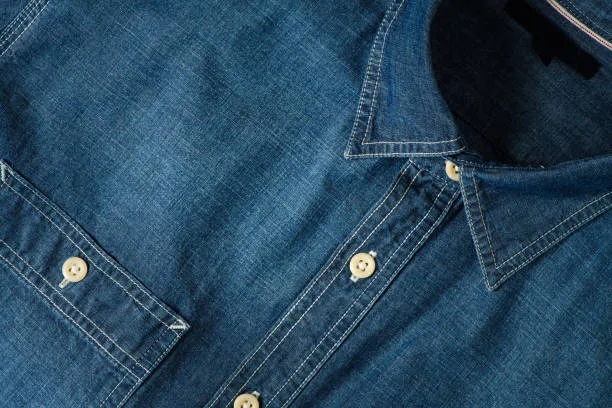Chambray is a relatively lightweight plain-weave cotton fabric, woven with a colored warp thread and a white weft thread. Plain weave refers to a basic style of weaving in which the weft thread alternates over and under the warp thread; If you ever "wove" a two-color construction paper placemat in grade-school art class, you know what plain weave is! Chambray can be any color but is often seen in an indigo wash, which is part of the reason it's often confused with denim. Denim, however, is a twill fabric and is usually much heavier than chambray.
Chambray fabric
Chambray fabric is a type of woven cotton fabric that has gained popularity in recent years due to its versatility, durability, and unique appearance. Chambray is known for its soft texture, lightweight feel, and distinctive denim-like look, which makes it a popular choice for clothing designers and fashion enthusiasts.
Moreover, chambray has proven to be durable yet comfortable enough for everyday wear. Its lightweight nature not only makes it easy on the skin but also helps regulate body temperature during warmer weather conditions.
Chambray may have started out as just another type of cotton cloth but has now become synonymous with timeless style and comfort among both fashion enthusiasts and everyday people alike.
History of Chambray Fabric
Chambray fabric characteristics
i. One of the key features of chambray fabric is its weave pattern. This type of fabric consists of colored warp yarns (usually blue or indigo) that are alternated with white weft yarns to create a subtle checkered effect. The result is a semi-transparent cloth with a slightly faded appearance that gives it a vintage vibe.
ii. Another reason why chambray has become so popular over the years is that it can be used to make various types of garments. From casual shirts and dresses to more formal blouses and suits, chambray can be incorporated into any style or outfit. It also works well for making accessories such as scarves and bags.
iii. Finally, one interesting aspect of chambray fabric is how versatile it can be when paired with other materials such as leather or wool. When combined with denim jeans or jackets, for example, the contrasting textures create interesting visual effects that add depth to your outfit.
Chambray fabric description
Chambray upholstery fabric
Chambray is a type of fabric that has been around for centuries. It is made from cotton and was originally used for workwear due to its durability. Today, chambray fabric has become increasingly popular in upholstery because of its versatility and timeless appeal.
Some special benefits of Chambray upholstery fabric are as below-
i. The unique texture and color variation of chambray upholstery fabric makes it a great choice for any interior design project. The denim-like appearance adds depth to the furniture piece while still maintaining a classic look. Chambray also works well with other fabrics, patterns, and colors, making it easy to mix and match different elements in a room.
ii. One reason many people choose chambray as their go-to upholstery fabric is that it's very durable. This means that even high-traffic areas won't show wear or tear quickly over time. It can withstand everyday use without fading or losing its shape.
iii. Another benefit of using chambray as your upholstery fabric is how easy it can be to clean. If you spill something on your couch or chair covered in chambray, all you need to do is wipe away the liquid with a damp cloth - no special cleaning products are required.
iv. Additionally, chambray offers some practical benefits when used in upholstery projects such as slipcovers or cushion covers thanks to its breathability qualities which prevent moisture build-up that could lead to unpleasant odors over time.
v. Overall, choosing chambray as your upholstering material means investing in both style and functionality simultaneously – ensuring long-lasting beauty alongside comfortability during daily use.










0 Comments